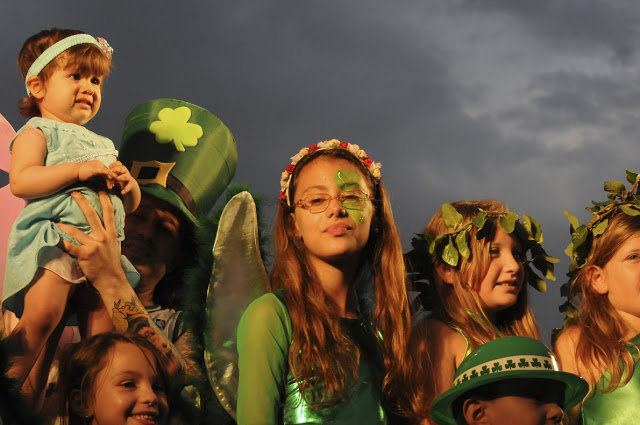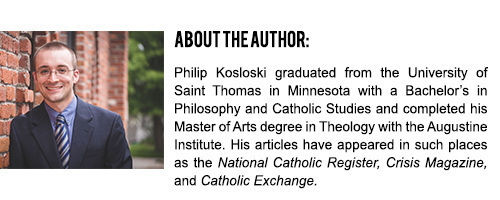|
The liturgical year of the Church does not stop during the week. In fact, each day is different and corresponds to a particular saint. These days are commonly known as "feast days" and focus our attention on the beautiful example of holiness that different men and women have given over the centuries.
While most people are familiar with Saint Patrick's Day or Saint Valentine's Day, there are many more saint days than that and each are given a specific "rank" in the hierarchy of the liturgical year. To help you better understand how the Church celebrates the feast days of saints, here is a breakdown of the "hierarchy" (solemnities, feasts and memorials): A solemnity is celebrated if it falls on a Sunday of ordinary time or Christmastide. But it is usually transferred to the following Monday if it falls on a Sunday of Advent, Lent or Easter, or during Holy Week or the Easter octave. A feast honors a mystery or title of the Lord, of Our Lady, or of saints of particular importance (such as the apostles and Evangelists) and some of historical importance such as the deacon St. Lawrence. Feasts of the Lord, such as the Transfiguration and Exaltation of the Holy Cross, unlike other feasts, are celebrated when they fall on a Sunday. A memorial is usually of saints but may also celebrate some aspect of the Lord or of Mary. Examples include the optional memorial of the Holy Name of Jesus or the obligatory memorial of the Immaculate Heart of Mary. (EWTN, emphasis added) During week, there can be a "solemnity" on Monday, a "feast" on Wednesday, and a "memorial" on Friday. Each celebration has a specific focus and may commemorate a specific event (Christmas Day) or a specific saint (Saint Patrick). The USCCB has a handy calendar on their website that lets you know what is being celebrated on a specific day and denotes whether it is a "solemnity," "feast," or "memorial." Along with this "hierarchy," each saint or celebration is given a color. These colors correspond to the type of saint (priest, religious, martyr, etc.) or focus of each celebration (Holy Spirit, penance, etc.). Here is how the General Instruction of the Roman Missal explains the colors: [the various colors are] “meant to give effective, outward expression to the specific character of the mysteries of faith being celebrated and, in the course of the liturgical year, to a sense of progress in the Christian life.” a) White is used in the offices and masses during the seasons of Easter and Christmas; also on celebrations of the Lord, other than of his passion; on celebrations of the Blessed Virgin Mary, the angels, saints who were not martyrs; on the solemnity of All Saints (November 1); the feasts of the Birth of John the Baptist (June 24), John, apostle, evangelist (December 27), the Chair of Peter (February 22), and the Conversion of Paul (January 25). b) Red is used on Passion Sunday (Palm Sunday) and Good Friday, Pentecost Sunday, celebrations of the Lord’s passion, “birthday” feasts of the apostles and evangelists, and celebrations of martyrs. c) Green is used in the offices and Masses of Ordinary Time. d) Violet is used in Advent and Lent. It may also be worn in Offices and Masses for the dead. e) Black may be used, where it is the custom, in Masses for the dead. f) Rose may be used, where it is the custom, on Gaudete Sunday (Third Sunday of Advent) and Laetare Sunday (Fourth Sunday of Lent). However, regarding liturgical colors, the Conference of Bishops may define and propose to the Holy See adaptations which respond to the needs and genius of the peoples.” (GIRM, no. 345-6) So remember, the Church does not only celebrate Saint Patrick or Saint Valentine; each day is devoted to a saint or celebration in the Church. Check out the USCCB website to find out! The Church wants to highlight the lives of holy men and women so that we can see that anyone can become a saint! The next time we celebrate a "feast day," let us make sure to honor the life of the saint by imitating their virtues and not simply throwing a big party! Read the Entire Series
0 Comments
Your comment will be posted after it is approved.
Leave a Reply. |
MASS SCHEDULE
Tuesday - Friday: 8:00 AM Saturday: 4:00 PM Sunday: 8:00 AM & 10:00 AM RECONCILIATION
Saturday: 3:15 - 3:45 PM OFFICE HOURS
Monday - Thursday: 8:30 AM – 5:00 PM Friday: 8:30 AM – 12:30 PM Stay Connected with Our ParishWelcome from Our PastorWelcome to Christ the King Catholic Church! Ever since 1938 this parish has been assisting souls in their quest for deeper union with God. Our mission statement is essentially found in the stained glass window above the main altar: “For Christ our King.” Insofar as God made us and we belong to Him, we have come to... Read More
Archives
February 2021
Categories
All
|
Copyright © 2024 Christ the King Parish. All Rights Reserved.
Mailing address: 306 S. LaSalle St, Spencer, WI 54479
(715) 659-4480




 RSS Feed
RSS Feed